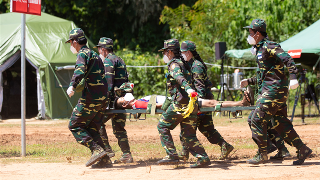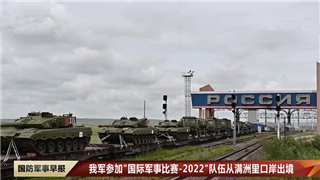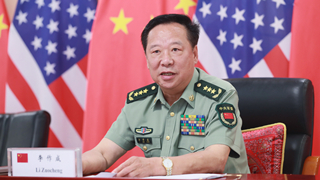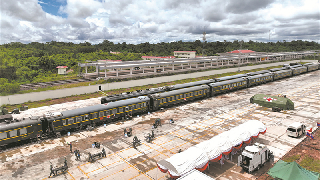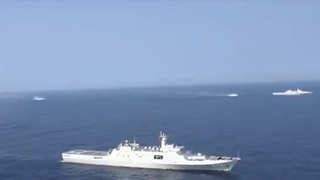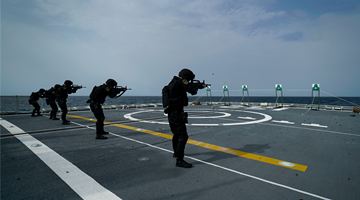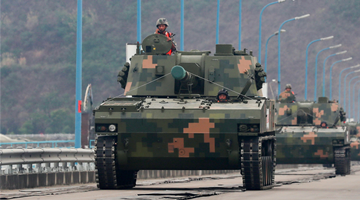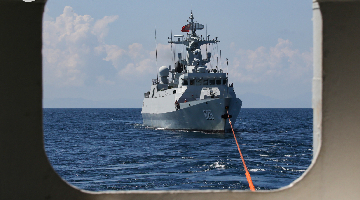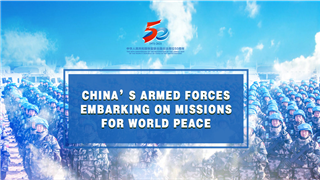The Chinese Air Force was formerly called the “airfield defender” because of its “inadequate capability”. The Chinese Navy was formerly called “Brown-water Navy” or “Coastal Cruiser” because its primary missions were restricted to the inshore defense due to the outdated ships.
Opportunity favours only the prepared mind. In 2008, increasingly intensified piracy in waters off Somalia offered opportunity for the Chinese Navy to gain blue water experience.
After several decades, the then Chinese Navy had made some remarkable development, with two 052B guided-missile frigates, two 052C guided-missile frigates, two 054 guided-missile frigates, four 054A guided-missile frigates and three comprehensive supply ships. Unfortunately, the limited vessels were still difficult to meet the requirement at that time.
In December 2008, the first Chinese naval escort taskforce composing of the 052B guided-missile frigate Wuhan (Hull 169), the 052C guided-missile destroyer Haikou (Hull 171) and the comprehensive supply ship Weishanhu (Hull 887) of the South China Sea Fleet under the PLA Navy sailed out from Sanya, south China’s Hainan Province, to waters off Somalia. China dispatched half of its main destroyers with area air-defence capability and capable of fighting modern warfare.
Fortunately, four domestic-made destroyers were all deployed to the South China Sea Fleet of the PLA Navy at that time. Otherwise, there would be no destroyers with modern combat capability left in the South China Sea after the escort taskforce left.
Relying on ten domestic-made main battle ships and three supply ships, eight Chinese naval escort taskforces fulfilled their escort missions in the waters off Somalia from 2008 to 2011.
In July 2011, the 054A guided-missile frigate Yulin (Hull 569), which had been commissioned for less than one and half years, jointed the 9th Chinese naval escort taskforce and became the latest frigate in the Chinese naval escort taskforce. Two years later, three latest supply ships including Taihu (Hull 889), Weishanhu (Hull 887) and Qiandaohu (Hull 889) joined the escort taskforce.
Today, the Chinese Navy is no longer worried about warship shortages. Not only were more warships built, the qualities had also been improved on a gradual basis. From the "Chinese Aegis" to 10,000-ton destroyers, from a refitted Russia-made aircraft carrier to a new domestic-made aircraft carrier, the Chinese Navy is transforming from a green-water navy into a robust blue-water navy.
With the improvement of the Chinese Navy’s hardware, the escort missions in the Gulf of Aden and the waters off Somalia have become training opportunities to sharpen the Chinese Navy’s software capacity. Since then, the Chinese escort missions have a deeper connotation, especially after evacuation of the Chinese nationals from Libya in 2011.
Before 2013, the mission handover for Chinese naval escort taskforces usually took place in March, July and November. However it has been changed to April, August and November after 2013. The one-month postponement provided an opportunity for the Chinese Navy to gain a better understanding of the situation in Africa, especially along the coast of the Gulf of Aden. It also demonstrated China’s determination in defending its national interests abroad.
The climate in Africa and the coast along the Gulf of Aden is warm and humid at the beginning and the end of each year, while it is dry and extremely hot in the middle of the year. It is warm and humid from November to April, and it has always been the period of violent upheavals. The evacuation of Chinese nationals from Libya occurred in February 2011 and the evacuation of Chinese nationals from Yemen occurred in March 2015.
After the change of handover date, since the fifth Chinese naval escort taskforce in 2010, the escort taskforce did not return home directly after completing escort missions, but continued to visit countries in Europe, Africa, Asia and Oceania. The 20th Chinese naval escort taskforce even went on a 5-month global voyage in 2015.
It means that there are usually two Chinese naval taskforces at that region in most of the time. One conducts escort missions in the Gulf of Aden while the other conducts friendly port visits in the surrounding areas. In this way China can easily handle any emergency.
In 2011, China difficultly evacuated Chinese nationals from Libya, whereas in 2015, China confidently evacuated Chinese nationals from Yemen. The change is a result of its new blue-navy strategy. More importantly, the presence of the Chinese fleet is a deterrent to the destabilizing factors in the region and make them to think twice before hurting China’s interests. The heavy loss of Chinese investment during the Libyan Civil War is a warning to China and we should try to avoid such losses in the future.
Africa is an important strategic area for China’s Belt and Road Initiative, a region with the fastest growth of China’s foreign investment and trade as well as a market where China holds great expectation. The Chinese Navy’s visits to the countries in the region and its presence will not only promote the friendly relations with these countries, but also demonstrate China’s strength and capacity to safeguard national interests.
The initial aim of China to participate in escort missions was to gain blue water experience. However, keeping with changes, the Chinese naval escort taskforces have now become the vanguard to protect China’s interests overseas.
Disclaimer: The author is Ren Ran. The article is translated from Chinese into English and edited by the China Military online. The information, ideas or opinions appearing in this article are those of the author and do not reflect the views of eng.chinamil.com.cn. Chinamil.com.cn does not assume any responsibility or liability for the same. If the article carries photographs or images, we do not vouch for their authenticity.
